Click the exhibit.

The AS-path nullification method is used to prevent CE2 from discarding routes received from CE1. On which router should the AS-path nullification policy be configured?
In a VPRN, what type of logical topology is required for the BGP sessions configured in the provider core?
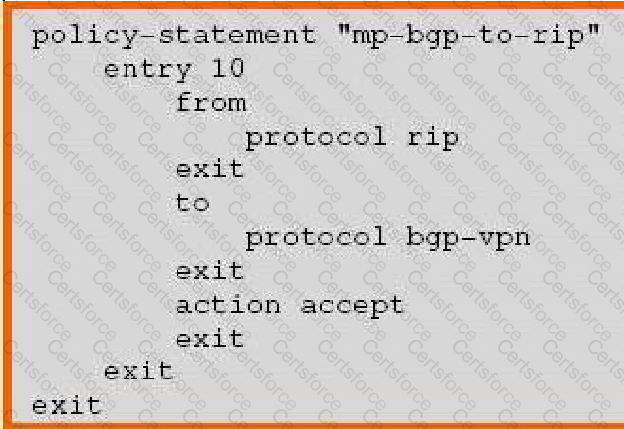
Which of the following about inter-AS model B VPRN is FALSE?
Where are VPN-IPv4 addresses used in a VPRN?
Which protocol is used to exchange customer VPRN routes between PE devices?
For a Carrier Supporting Carrier (CSC) VPRN where the customer carrier is a BGP/MPLS VPN Service Provider (SP), which of the following is FALSE?
Click the exhibit.

For the inter-AS model B VPRN, which of the following is the correct BGP configuration on ASBR1?
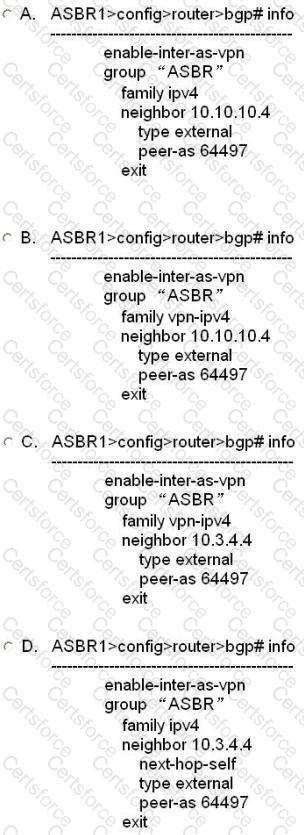
Which of the following about the configuration of BGP Site of Origin (SoO) is TRUE?
Which of the following statements best describes the output from an Alcatel-Lucent 7750 SR shown below?
Which of the following describes BGP route processing on the Alcatel-Lucent 7750 SR?
What is the result of configuring the following policy statement as a BGP import policy on the Alcatel-Lucent 7750 SR?
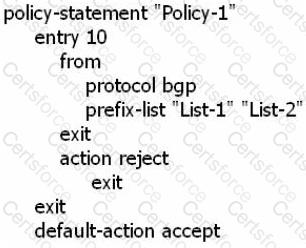
How is the aggregator attribute handled with 32-bit AS numbers?
Click the exhibit.

Assume all router-IDs are properly configured. Which of the following configurations is required on the Alcatel-Lucent 7750 SR router A to establish an IPv6 BGP session to router D?
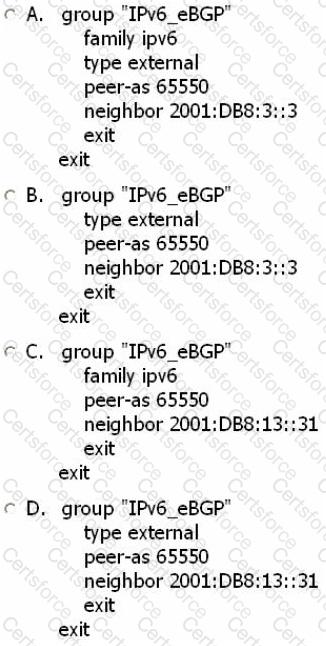
Click the exhibit.
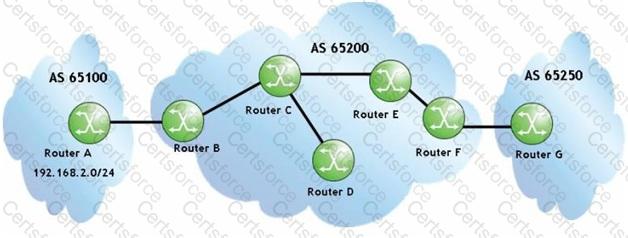
Routers C and E are route reflectors. When the update for prefix 192.168.2.0/24 is received at router F, what will be the Originator_ID attribute?
Which of the following regarding BGP authentication on the Alcatel-Lucent 7750 SR is FALSE?